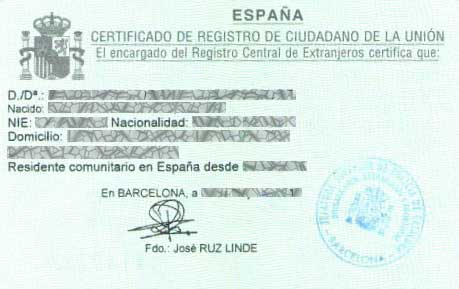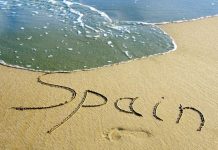The Número de Identidad de Extranjero (NIE) or Foreigner’s Identification Number is an identification and tax number in Spain for all foreigners. The NIE number typically starts with an X or Y followed by 7 digits. It is issued by the National Police of Spain or Policía Nacional and it applies for both EU and non-EU citizens.
Why do you need a NIE?
Who needs a NIE?
How do I get a NIE?
Why do you need a NIE?
The NIE is needed if you want to undertake economic activity in Spain such as open a bank account, get a telephone contract, get employed, buy/sell a car, buy/sell property, pay tax, etc.
Who needs a NIE?
Non-EU students: if you are not from Schengen and have a student visa type C (for less than 180 days), you won’t be able to apply for a NIE in Spain. If you have a student visa type C (to stay longer than 180 says), the [temporary] NIE number is written on your visa. And you will have to apply for a TIE card during the first 30 days of your stay in Spain. The Tarjeta de Identidad para Extranjeros (TIE) or Foreigner Identity Card is an ID that contains your NIE.
EU students: if you are from a Schengen area country (EU countries + Switzerland, Norway, Liechtenstein, and Iceland):
| Staying longer than 90 days | You are obliged to register as an EU resident in Spain and get the NIE certificate. | Your NIE will be printed on a Certificate of registration as an EU resident (Certificado de Registro de Ciudadano de la UE). |
| Staying less than 90 days | You can get a temporary NIE, but it is not obliged. | Your NIE will be printed on a Certificate of registration as an EU resident (Certificado de Registro de Ciudadano de la UE). |
How do I get the NIE?
1. Make an appointment at the Oficina de Extranjeros
In order to get your NIE certificate, you need to make an appointment with the local Foreigners Office (Oficina de Extranjeros) or the immigration police.
2. Fill out the NIE form
Fill out the NIE application form (EX-15). English instructions here
3. Go to the appointment and apply for your NIE
Before making the appointment online, you’ll be shown a list of things you need to bring. It is always recommended to bring all documents you have used for your Spanish study visa application, and have the required photocopies, as the Foreigners Office (Oficina de Extranjeros) or the immigration police will not make photocopies for you. For the NIE appointment, be sure to bring:
- The printed out NIE form
- 2 recent passport photos
- A supporting document, such as the acceptance letter from Linguaschools, that shows why you need a NIE
- A valid passport (that doesn’t expire for at least six months after the expiration of your visa, if applicable) and a copy of all the pages
- Fill out and pay the Tasa 790 that costs around 12 € (you can also print it, fill it out and pay it before going to the appointment)
- Depending on the police station you may need to prove where you live legally (Padrón).
If all goes well, you will be given the Certificado de Registro de Ciudadano de la UE with the NIE number on it on the spot. Please mind this document cannot be used to identify yourself and should always be shown together with your EU passport or ID card.
If you are a Linguaschools student and you have any questions or doubts about the process, just come by the school reception. We speak many different languages and we’d be happy to help you!
Other relevant articles:
- Do I need any visa to study Spanish in Spain?
- How to get a Spanish study visa for non-EU citizens? (applying from your home country)
- How to apply for a student visa while in Spain?
- How to renew a Spanish student visa?
- Can I work in Spain with a student visa?
- Medical insurance for Spanish student visa – all you need to know
- What is the NIE and how do I get it?
- What is the TIE and how to get it?
- How to apply to a university in Spain for international students
- PCE University Spain access exam for students from EU, China, Norway, etc.
- Find the best English speaking lawyers in Spain
The Linguaschools complete and comprehensive guide to Spanish paperwork.
Anything to add? Share your own experience in the comments below!
DISCLAIMER: We have gathered information to our best knowledge, from our experience, using a number of different (official) sources. Regulations change and interpretations may vary per country or region, but also between public office or staff. No rights can be derived from any of our articles. The content is merely a guide and we recommend you to check information with official sources before and during the process.






![CCSE exam for Spanish nationality in Barcelona [2024]](https://www.linguaschools.com/blog/wp-content/uploads/2020/08/photo-1434030216411-0b793f4b4173-218x150.jpg)

![The 9 Best Universities in Madrid for International Students [2024] UAH Madrid](https://www.linguaschools.com/blog/wp-content/uploads/2022/11/Universidad-de-Alcala-Madrid-218x150.jpg)
